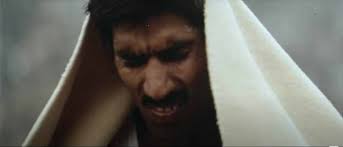HARBANS LAL SURI RECALLS 1964 OLYMPIC MARATHON RUN

He appears towards the end of the 17-minute video on YouTube around the 1964 Olympic Games marathon. The camera zooms in on his blistered soles and rises to a face that is grimacing in pain and, at the same time, reveals Harbans Lal Suri’s grit and resolve that saw him complete the race rather than give up midway.
“I have seen that video many times and I draw pride from having finished the gruelling race. It would have been easy to give up, because of the bleeding feet, but it would have been tough to live with the thought that some would say I went on a holiday and eventually let the country down,” the 82-year-old says from his Ghaziabad home.
As many as 56 years after his race, Harbans Lal Suri recalls the race as if he ran it just a few weeks earlier. “We had never experienced anything like that before. It was an eye-opener,” the barefoot runner says, recalling that he finished the 42km in 2 hours 37 minutes 5.8 seconds. “I won the trials in Delhi in 2:28 to qualify for the Olympic Games.”
“It was cold in Tokyo, but it was just as well for us that the marathon was in the afternoon. Honestly, we should have matched our time that we clocked in the trials,” he says. “When running a sub-2:28, I picked up a cut in my foot when nearing the finish in the Railway Stadium, now called the Karnail Singh Stadium, in Delhi. That flared up during the Tokyo run.
“I was running a comfortable place till 35km or so when the blisters started bleeding and I was in excruciating pain,” he says, pausing as if to erase that memory. It was only a strong desire to finish that took me across the line. I always hope that people will appreciate the hard work and determination behind the agonised look on the YouTube video,” he says.
Harbans Lal Suri lights up at the mention of racing with the legendary Ethiopian Abebe Bikila. “When I look back at our conversations now, I smile. I do not think he understood what we said. Nor did we understand what he spoke. But running with him was sheer delight. Who needs language to understand one another when sport can bring people together?
“Till this day, I recall his stride length was consistent while lesser runners would end up shortening their stride length in the second half of the race. He had the amazing ability to relax during the race and accelerate without warning or apparent effort. We could not compare on any aspect – be his speed, experience, or competitive spirit,” Harbans Lal Suri says.
He chanced upon running but cherishes his association with athletics to this day. He used to play football and cricket when in high school.
“I used to be a wicket-keeper and opening batsman. But when I was not allowed to become the captain of the school team, because the teacher believed I did not have the leadership skills, I took to athletics in 1955,” he recalls.
“I finished second in the university steeplechase and realised it was better to be a runner and let performances speak for themselves. It is what fetched me a job with the Railways when I ran faster than the man chosen to run for the Northern Railway in the National Championships. I owe this to a Mr. Ramamurthy who encouraged me to take up a job,” he says.
German Olympian Otto Peltzer, who was coaching in Modern School, was the one who encouraged me to take to marathon after he saw me run the 5 miles and 10 miles events on one day in the Delhi State Road Races. It was only then that I competed in the Inter-University Championships, Northern Railway championships and the Inter-Railway Championships.
“I ran barefoot from the beginning of my athletics career – be it in the inter-collegiate or the inter-university or the national championships. I started off as a steeplechaser and then converted to a long-distance runner. It was a struggle to the top, with no formal coaching. The only help we would get was from coaches like JS Saini, TJ Francis and Illyas Babar,” he says.
After the Tokyo Olympics, his only international marathon, Harbans Lal Suri gave up sport and focussed on his professional career. “I was heartbroken when Railways did not promote me – and a promotion would have allowed me to train longer – and gave up running for academics. Worse, I had to do my day job as TTE and then practice in the evening,” he recalls.
“In any case, there was no great future as a marathon runner. It is only in the recent years that runners have been able to win prize money. I pursued graduation and post-graduation studies when with the Railways. After 13 years of service, I gave up that job to join my alma mater, MMS College in Ghaziabad, as the Director of Physical Education.
“Some years later, I was appointed to as Physical Education lecturer in the Satyavati College in Delhi University. I am proud of the effort I put in when I was in athletics and later in academics. I acknowledge the help from a number of people in my journey, but I would like to believe that I am a self-made man, one who charted his own destiny,” he says. Indeed.






